Calathea plants are known for their vibrant and striking foliage, which makes them a popular choice for indoor gardeners. However, one common issue that many Calathea owners face is drooping leaves.
When a Calathea plant starts to droop, it can be a cause for concern, but it’s important to understand that this is a common problem that can be easily fixed with the right care and attention.
There are several reasons why Calathea leaves may start to droop. One of the most common causes is watering issues, such as overwatering or underwatering. Other factors that can contribute to calathea plant drooping include low humidity, lack of light, temperature stress, and soil and drainage problems.
Understanding these factors and how to address them is key to reviving a drooping Calathea and preventing future issues.
Key Takeaways
- Calathea plants are prone to drooping leaves, which can be caused by several factors.
- Common causes of drooping Calathea leaves include watering issues, low humidity, and soil and drainage problems.
- By addressing these issues and providing the right care, it’s possible to revive a drooping Calathea and prevent future problems.
Other popular posts you shouldn’t miss on:
Understanding Calathea Plant
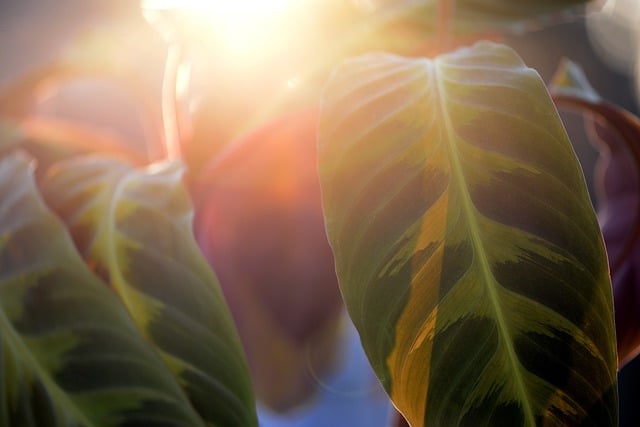
Calathea plants are a popular choice for indoor plant enthusiasts due to their unique and vibrant foliage. They are known for their striking patterns and colors, which make them stand out among other tropical plants. The Calathea plant is also known as the prayer plant because its leaves fold up at night, resembling hands in prayer.
Calathea plants are native to South America and are part of the Marantaceae family. They thrive in warm and humid environments, which make them perfect for indoor environments. These plants require a bit more attention than other indoor plants, but they are worth the effort.
One of the most common issues with Calathea plants is drooping. This can be caused by a variety of factors, including overwatering, underwatering, low humidity, or damage to the roots. It is essential to understand the needs of your Calathea plant to prevent drooping and other issues.
Calathea plants require consistent watering, but they do not like to sit in water. It is important to allow the top layer of soil to dry out before watering again. Overwatering can lead to root rot and other issues, which can cause your Calathea plant to droop.
On the other hand, underwatering can also cause drooping, so it is important to find the right balance.
In addition to proper watering, Calathea plants require high humidity levels. They are native to tropical environments, which means they thrive in humid conditions. If the air in your home is dry, you can use a humidifier or place a tray of water near your plant to increase the humidity levels.
It is also important to avoid placing your Calathea plant near a heating vent or other sources of dry air.
Calathea Plant Drooping
Calathea plants are known for their beautiful foliage, which can add a touch of elegance to any living space. However, if you notice that the leaves of your Calathea plant are drooping, it could be a sign that something is wrong.
Several factors can cause Calathea leaves to droop, including dehydration, low humidity, damage to the roots, and temperature stress. When the soil is too dry, the cells that generate turgor pressure to help the plant stay upright do not have enough water to function correctly. As a result, the leaves lose their rigidity and start to droop.
Low humidity levels can also cause Calathea leaves to droop. These plants prefer moist soil and humid environments, and if the air is too dry, the leaves can lose moisture and start to droop.
It is essential to note that the natural movement of Calathea leaves is known as nyctinasty, which means that they move in response to changes in light and darkness. Therefore, it is crucial to differentiate between the natural movement of the leaves and drooping caused by other factors.
Watering and Moisture Issues

Calathea plants require consistent moisture to thrive, but overwatering or underwatering can lead to drooping leaves. One of the most common causes of drooping leaves in Calathea plants is improper watering.
Overwatering can lead to waterlogged soil, which can cause the roots to rot and prevent the plant from absorbing water. Signs of overwatering include yellowing leaves, mushy stems, and a foul odor. If the soil feels moist or waterlogged, it’s likely that the plant is being overwatered.
On the other hand, underwatering can cause the soil to dry out, making it difficult for the plant to absorb water. Signs of underwatering include dry, brown leaves and soil that feels dry to the touch.
To prevent overwatering or underwatering, it’s important to establish a regular watering schedule. Calathea plants prefer moist soil, but not soil that is waterlogged. The soil should be allowed to dry out slightly between waterings, but not so much that the plant becomes dehydrated.
One way to ensure that the soil stays moist without becoming waterlogged is to use distilled water or rainwater instead of tap water. Tap water can contain minerals and chemicals that can build up in the soil over time and affect the plant’s ability to absorb water.
In addition to proper watering, it’s important to maintain a consistent level of humidity around the plant. Calathea plants prefer high humidity levels, so it’s important to mist the leaves regularly or place the plant on a pebble tray filled with water to increase moisture in the air.
Soil and Drainage Problems
Calathea plants require well-draining soil to thrive. Poor drainage can lead to long-term drooping of the plant. While these plants like moist soil, they can’t handle actual standing water around the roots.
To check for standing water around the bottom of the container, lift the root ball up and out of the pot. If there is standing water, it is recommended to repot the plant into a pot with drainage holes.
Using a soil meter can also help determine if the soil is too wet or too dry. If the soil is too wet, it can be a sign of poor drainage. In this case, it is recommended to add perlite or compost to the potting mix to increase drainage.
It is important to note that Calathea plants are sensitive to the type of potting mix used. A well-draining potting mix that is rich in organic matter is ideal for these plants. A mix of peat moss, perlite, and vermiculite can be used to create a suitable potting mix for Calathea plants.
Temperature and Light Conditions
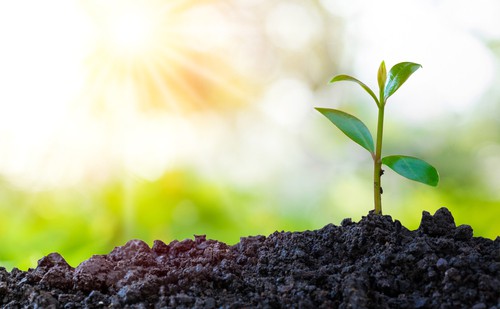
Calathea plants prefer warm and humid environments. They thrive in temperatures between 65°F and 80°F. Temperatures below 60°F can cause the leaves to droop and turn brown. On the other hand, temperatures above 85°F can cause the leaves to curl up and become crispy.
Direct sunlight is harmful to Calathea plants. It can cause the leaves to burn and turn brown. Therefore, it is important to place the plant in a location that receives bright, indirect light. A north-facing window is an ideal spot for Calathea plants. They can also be placed in east or west-facing windows if they are protected by sheer curtains or blinds.
Temperature stress can also cause Calathea leaves to droop. If the plant is exposed to sudden temperature changes, such as cold drafts or hot air blowing from a vent, it can cause the leaves to curl up and droop. To avoid this, it is recommended to keep the plant away from air conditioning vents or heating sources.
Low light conditions can also cause Calathea leaves to droop. If the plant is not receiving enough light, it can cause the leaves to become pale and droop. However, too much light can also cause the leaves to burn and turn brown. Therefore, it is important to find a balance and provide the plant with filtered light.
Humidity and Its Effects
Calathea plants are native to tropical regions and thrive in a humid environment. Low humidity levels can cause the leaves to droop and wilt. It is important to maintain the right humidity levels to keep your Calathea plant healthy and prevent drooping.
Humidity levels between 50% to 60% are ideal for Calathea plants. If the humidity levels in your home are lower than this, you can use a humidifier to increase the moisture in the air. Alternatively, you can place a pebble tray filled with water near the plant to increase the humidity levels. The water in the tray will evaporate and create a humid environment around the plant.
A hygrometer can be used to measure the humidity levels in your home. This device will help you determine if the humidity levels are too low for your Calathea plant. If the humidity levels are too low, you can take steps to increase the moisture in the air.
It is important to note that too much humidity can also be harmful to your Calathea plant. Excessive moisture can lead to root rot and other fungal diseases. It is important to maintain a balance and keep the humidity levels within the ideal range.
Nutrients and Fertilizer Use
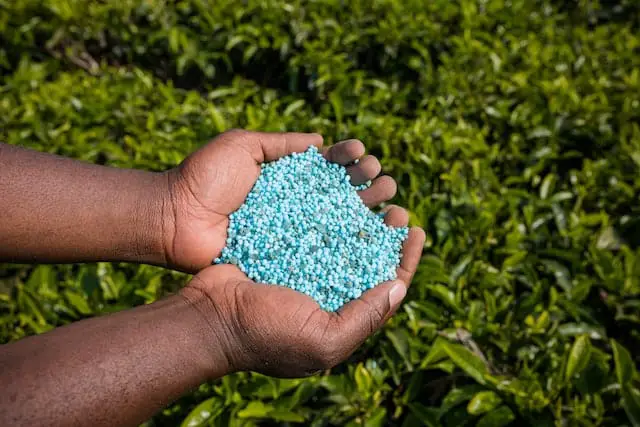
Calathea plants require a balanced supply of nutrients to grow healthy and strong. Lack of proper nutrients can cause the leaves to droop and lose their color. Nitrogen, phosphorus, and potassium are the primary macronutrients that plants need to grow.
Fertilizers are a great way to provide the necessary nutrients to the plant. A balanced NPK fertilizer with equal amounts of nitrogen, phosphorus, and potassium is ideal for Calathea plants. A light dose of 3-3-3 fertilizer can help the new growth perk up and grow straighter.
However, excess fertilizer can damage the roots and cause the plant to droop. Overfertilization can lead to a buildup of mineral salts in the soil, which can clog the roots and reduce the net flow of water to the leaves. This can cause the leaves to turn yellow and the tips to brown.
It is important to avoid overfertilization and follow the instructions on the fertilizer package. The plant should be fertilized once a month during the growing season and once every two months during the dormant season.
In addition to fertilizers, organic matter such as compost can also be added to the soil to improve its fertility. This can help the plant grow healthy and strong, and prevent nutrient deficiencies that can cause the leaves to droop.
Pests and Diseases
Calathea plants are susceptible to a variety of pests and diseases, which can cause the plant to droop and wilt. Here are some common pests and diseases to watch out for:
Pests
Spider Mites
Spider mites are tiny pests that can infest Calathea plants and cause leaves to look yellow and stippled. They thrive in dry, warm conditions and can quickly spread from plant to plant.
To prevent spider mite infestations, keep the plant’s humidity levels high and periodically mist the leaves. If you notice spider mites on your plant, use an insecticidal soap or neem oil to control the infestation.
Aphids
Aphids are another common pest that can infest Calathea plants. They are small, pear-shaped insects that feed on the plant’s sap and can cause leaves to curl and distort.
To prevent aphids, keep the plant’s foliage clean and dust-free. If you notice aphids on your plant, use a mild insecticidal soap or neem oil to control the infestation.
Mealybugs
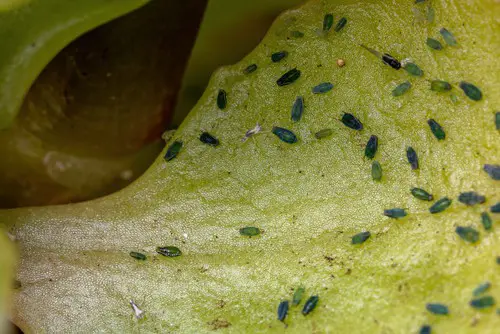
Mealybugs are soft-bodied insects that can infest the roots, stems, and leaves of Calathea plants. They are covered in a white, cotton-like substance and can cause leaves to look yellow and wilted.
To prevent mealybug infestations, keep the plant’s humidity levels high and periodically mist the leaves. If you notice mealybugs on your plant, use an insecticidal soap or neem oil to control the infestation.
Diseases
Fungus
Fungal diseases can also cause Calathea plants to droop and wilt. These diseases are often caused by overwatering or poor drainage, which can lead to root rot. To prevent fungal diseases, make sure the plant’s soil is well-draining and avoid overwatering.
If you notice signs of fungal disease, such as yellowing leaves or black spots on the foliage, remove the affected leaves and treat the plant with a fungicide.
Repotting and Root Issues
Repotting is an essential process in the growth and maintenance of Calathea plants. When the plant is root-bound, it’s time to move it to a larger pot. A root-bound plant may show signs of wilting and drooping, as the roots have no more room to grow and absorb nutrients.
Repotting will give the plant more space to grow and allow the roots to spread out and absorb nutrients more efficiently.
When repotting, it’s essential to check the root system for any signs of damage or root rot. Root rot is a fungal disease that can occur when the roots are sitting in water for too long, causing them to become mushy and brown. If left untreated, the disease can spread to the rest of the plant and cause irreversible damage.
Before repotting, gently remove the plant from its current pot and inspect the roots. If you notice any mushy or brown roots, remove them with a clean pair of scissors. It’s also essential to remove any dead or yellow leaves and trim any damaged roots.
When repotting, make sure to use a well-draining potting mix to prevent water from accumulating at the bottom of the pot. It’s also essential to choose a pot that is only one size larger than the current pot to avoid overpotting and reduce the risk of root rot.
After repotting, the plant may experience transplant shock, which can cause drooping and wilting. To reduce the risk of transplant shock, water the plant thoroughly and place it in a shaded area for a few days to allow it to adjust to its new environment.
Reviving a Drooping Calathea
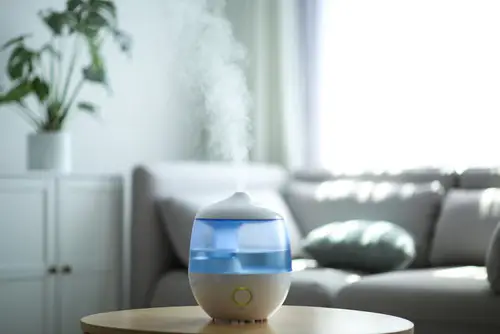
If your Calathea plant is drooping, it could be due to a variety of reasons such as underwatering, overwatering, low humidity, rootbound, repotting shock, dusty leaves, and more. However, the good news is that it’s fairly easy to bring these plants back to a healthy state when they begin to droop.
1. Watering Schedule
One of the most common reasons for a drooping Calathea is moisture loss due to underwatering or overwatering. Therefore, it’s important to maintain a consistent watering schedule.
These plants will need to be watered once every 1 to 2 weeks, depending on the humidity and temperature of your home. Stick your bare fingers into the soil and feel it. If the soil is dry up to a depth of 2 inches, it’s time to water your Calathea.
Don’t let the soil go dry completely between the watering sessions. Calathea thrives in just moist soil. If you water the plant consciously, you won’t run into any issues. Get a soil moisture meter if needed.
2. Humidity
Calathea plants thrive in high humidity environments. Therefore, it’s important to keep the humidity levels high around the plant. Move the plant to a humid bathroom or kitchen.
Set the pot on top of a pebble tray or place a humidifier near your Calathea. It’s also a good idea to check whether your plant is sitting near a heating vent, a fireplace, or some other source of hot and dry air. If so, move it somewhere else!
3. Trim the Leaves
If your Calathea has brown, crispy, or yellowing leaves, it’s important to trim them off. These leaves are no longer able to contribute to the transpiration process, which is essential for the plant’s overall health. Use a pair of clean, sharp scissors to cut off the damaged leaves at the base, being careful not to damage the healthy leaves.
4. Check for Cold Drafts
Calathea plants are sensitive to cold drafts. If your plant is situated near a window or door that is frequently opened, it may be experiencing cold drafts that are causing it to droop. Move the plant to a warmer location away from any cold drafts.
5. Increase Turgidity
If your Calathea is drooping due to dehydration, you can increase its turgidity by misting the leaves with water. You can also use a solution of hydrogen peroxide and water to increase the oxygen levels around the roots, which can help the plant recover more quickly.
By following these simple tips, you can help revive your drooping Calathea and bring it back to a healthy state.
Preventing Future Droop
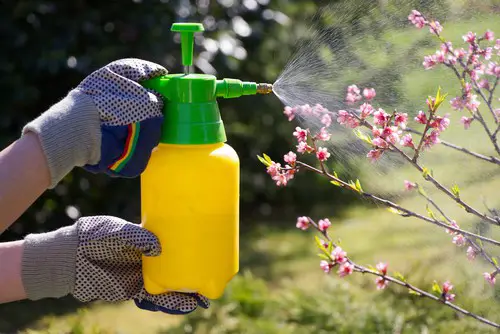
To prevent future drooping of Calathea plants, it is important to understand the causes of drooping and take preventative measures. Here are some tips to keep your Calathea healthy and upright:
1. Watering: Overwatering or underwatering can cause Calathea leaves to droop. It is important to water the plant when the top inch of soil feels dry to the touch. Calathea plants prefer moist soil, but not waterlogged soil. It is important to water the plant thoroughly, but allow the excess water to drain out of the pot.
2. Humidity: Calathea plants thrive in high humidity environments. Low humidity can cause the leaves to droop and curl. It is important to keep the humidity level between 60-70%. This can be achieved by placing a humidifier near the plant, or by placing a tray of water near the plant.
3. Lighting: Calathea plants prefer bright, indirect light. Direct sunlight can scorch the leaves and cause them to droop. It is important to place the plant in a location that receives bright, indirect light.
4. Fertilizing: Calathea plants require regular fertilization to maintain their health. It is important to use a balanced fertilizer and follow the instructions on the label. Over-fertilizing can cause the leaves to droop and turn yellow.
5. Pest Control: Calathea plants are susceptible to pests such as spider mites and mealybugs. It is important to inspect the plant regularly and treat any infestations promptly. There are many natural and chemical products available to control pests.
6. Repotting: Calathea plants should be repotted every 1-2 years. Repotting allows the plant to grow and develop a healthy root system. It is important to use a well-draining soil mix and a pot with drainage holes.
By following these tips, Calathea owners can prevent future drooping and keep their plants healthy and vibrant.
Frequently Asked Questions
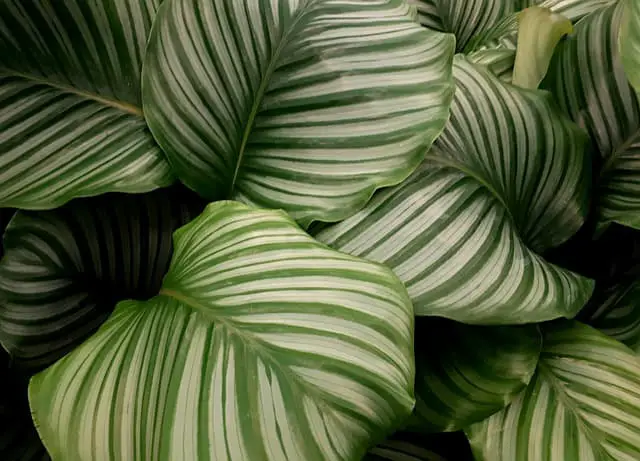
How do I fix droopy leaves on my Calathea plant?
The first step to fixing droopy leaves on a Calathea plant is to identify the cause of the drooping. Common causes include underwatering, overwatering, low humidity, rootbound conditions, repotting shock, and dusty leaves.
Once the cause is identified, take appropriate action to correct the issue. For example, if the plant is underwatered, give it a good drink of water. If it is overwatered, allow the soil to dry out before watering again.
What causes Calathea plants to droop?
Calathea plants can droop due to a variety of reasons including underwatering, overwatering, low humidity, rootbound conditions, repotting shock, and dusty leaves. It’s important to identify the cause of the drooping before taking any corrective action.
Why are my Calathea leaves curling?
Calathea leaves can curl due to a variety of reasons including underwatering, overwatering, low humidity, and temperature stress. Curling leaves can also be a sign of pests or diseases. It’s important to identify the cause of the curling before taking any corrective action.
What are some common diseases that affect Calathea plants?
Common diseases that affect Calathea plants include leaf spot, root rot, and bacterial wilt. These diseases can be caused by overwatering, poor drainage, and high humidity. It’s important to identify the disease early and take appropriate action to prevent it from spreading.
How can I tell if my Calathea plant is overwatered?
Signs that a Calathea plant is overwatered include yellowing leaves, mushy stems, and a foul odor. Overwatering can lead to root rot, which can be fatal to the plant. It’s important to allow the soil to dry out before watering again.
Do Calathea plants prefer direct sunlight or indirect light?
Calathea plants prefer indirect light. Direct sunlight can scorch the leaves and cause them to turn brown. Place the plant in a location where it can receive bright, indirect light.

Hey, I’m Lisa and I’ve been an avid gardener for over 30 years. I love writing, talking and living in the garden! Feel free to connect with me on my socials below


